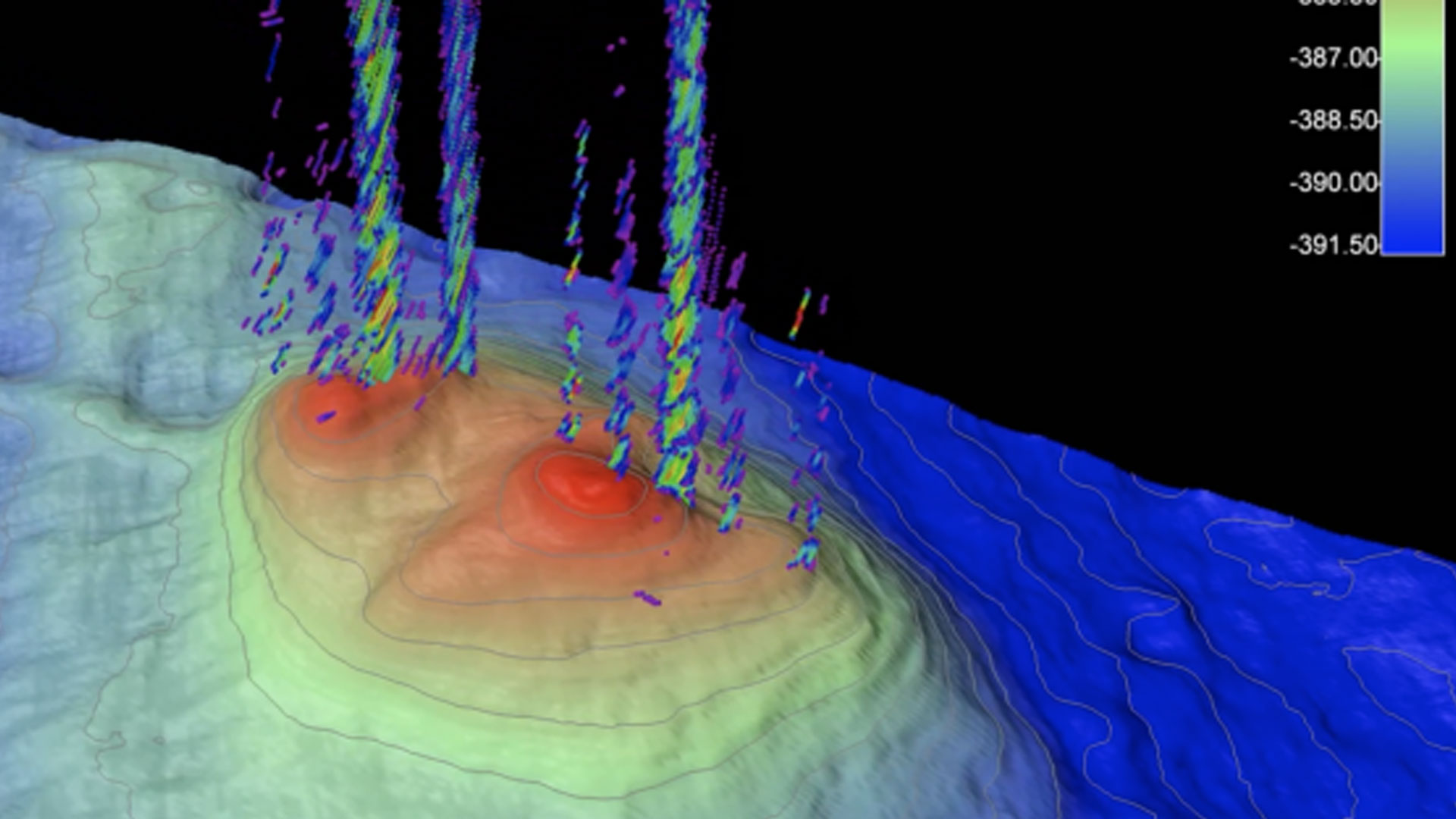Large Underwater Methane seeping Structures can collapse
Domes of frozen methane may be warning signs for new blow-outs.
For the first time, underwater pingos have been found, outside of the permafrost regions.
Domes of frozen methane may be warning signs for new blow-outs https://cage.uit.no/news/domes-of-frozen-methane-may-be-warning-signs-for-new-blow-outs/
Related
- Waking the Giant: Climate Force and Geological Hazards https://www.youtube.com/watch?v=xndhx7KpSU0
- Gas Blowouts on the Yamal and Gydan Peninsulas http://www.geoexpro.com/articles/2015/12/gas-blowouts-on-the-yamal-and-gydan-peninsulas
- View of the methane seeps in the Arctic https://www.youtube.com/watch?v=6oTFjWBiP4E
- Leaking pingos ‘can explode under the sea in the Arctic, as well as on land’ http://siberiantimes.com/science/casestudy/features/f0183-leaking-pingos-can-explode-under-the-sea-in-the-arctic-as-well-as-on-land
- Massive craters on Arctic Ocean floor caused by methane blow out https://www.youtube.com/watch?v=oNg0z-bYsmY
- Scientists just found telltale evidence of an ancient methane explosion in the Arctic
/ A methane mound in the Canadian High Arctic, Stephen Grasby https://www.washingtonpost.com/news/energy-environment/wp/2017/04/21/scientists-just-found-telltale-evidence-of-an-ancient-methane-explosion-in-the-arctic-ocean - Blow-out craters on the Arctic seafloor https://www.youtube.com/watch?v=VQdr0GhoDAc
- Animation: From Glaciation to Global Warming – A Story of Sea Level Change (Titanic Belfast) https://www.youtube.com/watch?v=AKT610NxG3s
Transcript
Large underwater methane seeping structures could collapse
Based on reporting by Maja Sojtaric from the Center for Arctic Gas Hydrate CAGE, at The University of Norway.
For the first time, underwater pingos have been found, outside of the permafrost regions.
Several methane domes, so called pingos, some 500 meter wide, have been mapped on the Arctic ocean floor, in the Barents sea region.
These structures may be a sign of soon-to-happen methane blow-outs, based on studies of massive craters, found in a near-by area.
These domes are the present-day analogue to what resarchers think preceded the crater formation.
The craters were formed some 12.000 years ago, during a time of deglaciation, when ice sheets retreated from the Barents Searegion.
“Every year we go back to the dome area with our research vessel, and every year I am anxious to see if one of these domes has become a crater,”
says lead author of the study, Pavel Serov, PhD candidate at CAGE.
At the time, two kilometer thick ice masses covered what today is the ocean floor. Under the ice sheet the methane transformed into hydrates,
a solid form of frozen methane.
“We believe that one step before the craters are created, you get these domes. They are mounds of hydrates, technically we call them gas hydrate pingos.
They are hydrate and methane saturated relics of the last ice-age.
They haven’t collapsed yet. And the reason is a matter of narrow margins” stated Serov.
The dome area is situated just north of the craters.
Hydrates are stable in low temperatures and under high pressure. The pressure of 390 meters of water above is presently keeping them stabilised.
But methane is bubbling from these domes, one of the most active methane seeping sites that have been mapped in the Arctic Ocean.
Some of these methane flares extend almost to the sea surface, and all the collected sediment cores from that area are loaded with hydrates.
There have been no studies done yet, on estimations of how much methane may be released into the ocean should the domes collapse, or when this could occurr.
More stable than in permafrost
However, these domes are considered to be more stable than the pingos found in sub-sea permafrost regions of the Canadian and Russian Arctic.
“The gas hydrate pingos in permafrost are formed because of the low temperatures.
But the water-depth that supports gas hydrates in sub-sea permafrost is only 40 to 50 meters.
There is no significant pressure there to keep them in check. And the sub-seabed permafrost is deteriorating.
Even though they are more stable than the permafrost pingos, the Barents Sea domes are on the limit of their existence.
“A relatively small change in the water temperature can destabilise these hydrates fairly quickly.
We were actually very lucky to observe them at this point. And we will probably be able to observe significant changes to these domes during our lifetime.” noted
lead author of the study Postglacial response of Arctic Ocean gas hydrates to climatic amelioration, Pavel Serov.
The results are published in Proceedings of the National Academy of Sciences (PNAS).
Reference Serov, P., et.al.,Postglacial response of Arctic Ocean gas hydrates to climatic amelioration. PNAS 2017. Published ahead of print June 5, 2017, doi:10.1073/pnas.1619288114
